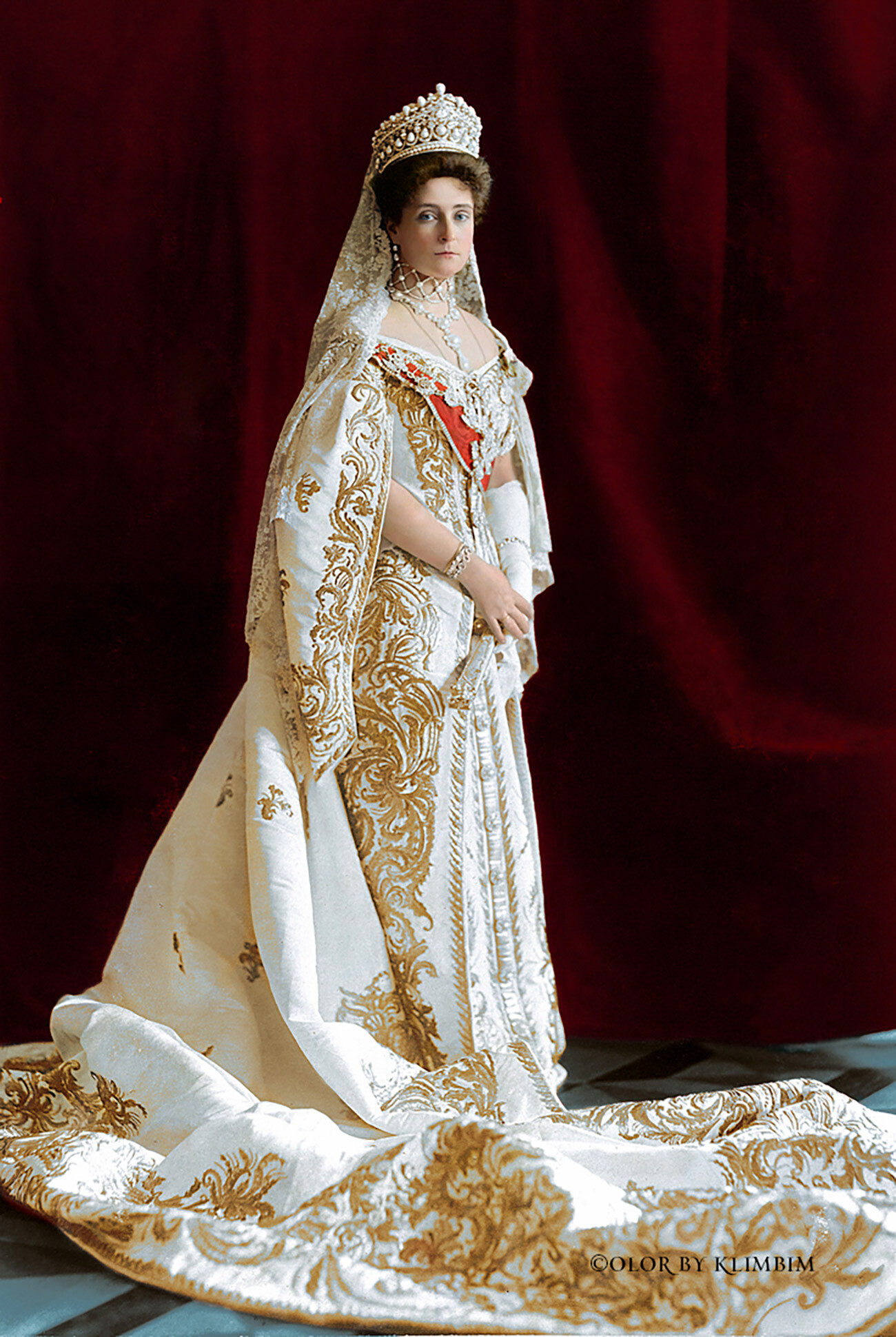
In the early 19th century, Emperor Nicholas I officially introduced a new court dress code. In the palace and at ceremonial events, everyone had to wear outfits sewn in the Russian style.

Duchess Zinaida Yusupova in the court maid of honor dress of Empress Maria Alexandrovna, 1880.
Karl Bergamasco/State museum-estate "Arkhangelskoye"/russiainphoto.ruRussian style came into fashion under his predecessor and brother Alexander I, especially after the victory in the 1812 Patriotic War with Napoleon. But, it was Nicholas I who made it compulsory for high society. Before this, ladies wore European-style formal dresses of black velvet with a train.

Russian court dress made by French fashion designer Charles Frederick Worth, circa 1888.
Indianapolis Museum of ArtAt the coronation of Nicholas I in 1826, the women were instructed to appear in national costume. Each lady completed her ‘sarafan’ with luxurious jewelry of her taste.

Pages from ‘Description of ladies' outfits for arrival at the highest court on special days”, 1834.
Public domainThe kokoshniks were made of silk with gold embroidery, the dresses were decorated with sapphires and emeralds and the shoes were finely embroidered.

Empress Alexandra Fedorovna, wife of Nicholas I, wearing a kokoshnik
Public domainThe official regulations of Russian court dress came out in 1834: the outer dress had to be made of velvet, with long sleeves and a train.

Unknown artist. Maria Feodorovna Rostovskaya, 1830s.
Public domainThe dress had to have a slit revealing the white skirt (usually satin or silk). Gold embroidery, meanwhile, whould be on the hem of the dress and skirt. On her head, a lady could wear a ‘povoinik’ (Russian cap) or a kokoshnik of any color with a white veil.

Karl Bryullov. Portrait of the Volkonsky children with a blackamoor, 1843.
Public domainYoung girls did not have deep necklines and a lot of jewelry. Dresses and headdresses were much more modest.

Sofia Ivanovna Grabbe, 1890.
Public domainThe ladies had their own court ranks and it was reflected in the dress color. For example, light blue outfits were supposed to be worn by the maids of honor of the grand duchesses, crimson with silver by the maids of honor of the grand princesses and purple with gold by the maids of honor of the empresses.

Countess Maria Borisovna Efimovskaya, 1883.
Public domainIf a lady did not have a position at the court, but was invited to an event, she, too, had to appear in the palace in Russian attire, only not to use the colors and patterns of court officials.

The last Empress Alexandra Feodorovna wearing a kokoshnik tiara.
Public domainOf course, the Russian style extended to jewelry, as well. The most luxurious tiaras of Russian empresses and members of the Romanov dynasty had the form of kokoshniks. And European queens also wanted to have such jewelry. They specially ordered themselves diamond ‘kokoshniks’ like the Russian empresses (read more about it here).

Pimen Orlov. ‘Portrait of an unknown woman in Russian court dress’, circa 1835, Hermitage.
Public domainCourt attire was far removed from the folk clothes worn by ordinary people in villages. However, it was in this form that the "Russian style" in clothing became known in the world, including thanks to the numerous portraits that have survived to this day. Artists depicted the empresses, their maid of honor and other court ladies in rich Russian dresses.

Portrait of the last Empress Alexandra Fiodorovna, 1906. Colored by Klimbim.
Public domainThe court regulations were in force until the 1917 Bolshevik Revolution, when the monarchy fell. Some outfits of past centuries have survived to this day, which can be seen in museums.

19th century court dress.
Sergei Pyatakov/SputnikDear readers,
Our website and social media accounts are under threat of being restricted or banned, due to the current circumstances. So, to keep up with our latest content, simply do the following:
If using any of Russia Beyond's content, partly or in full, always provide an active hyperlink to the original material.
Subscribe
to our newsletter!
Get the week's best stories straight to your inbox